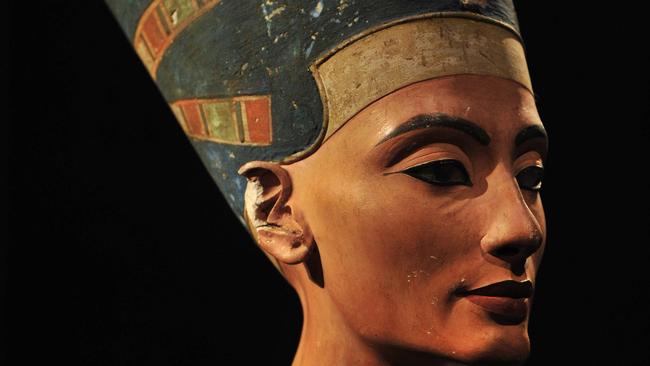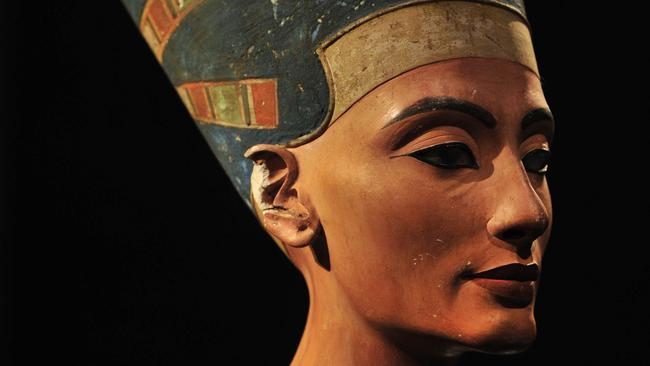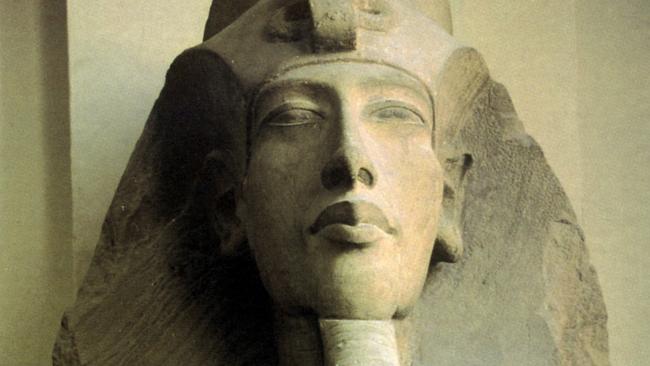Egyptian Queen Nefertiti a beautiful enigmaal
The discovery of what may be Nefertiti’s final resting place has Egyptologists excited that they may finally unlock some of the mysterious queen’s secrets

Today in History
Don't miss out on the headlines from Today in History. Followed categories will be added to My News.
Her name means “a beautiful woman has come” and those familiar with the perfection of the bust depicting her likeness will agree Nefertiti was aptly named. The discovery of what might be her final resting place, in a secret burial chamber adjoining Tutankhamen’s tomb, may answer some of the many questions archaeologists and Egyptologists have about Nefertiti, the most mysterious of Egyptian queens.
What is known is that she was married to one of the most controversial pharaohs, Akhenaten, who is believed to have started up his own monotheistic religion worshipping the sun disc Aten.
But her origins are shrouded in mystery. Neither her place or date of birth is known. One theory is her name suggests she came from elsewhere, possibly the kingdom of Mitanni (Syria), then a major power. Other Egyptologists argue there is evidence she was the daughter or niece of Ay, a high court official and the brother of Akhenaten’s mother Tiy. So she may have been Akhenaten’s cousin.
Nefertiti was probably married at 15, before her husband Akhenaten took the throne under the name of Amenhotep IV in about 53BC. Over 10 years they had at least six daughters, and possibly a son. Nefertiti is often depicted in reliefs and paintings as standing alongside her husband; never before had a queen been afforded such a constant place of honour beside a pharaoh.

When the pharaoh changed his name from Amenhotep to Akhenaten early in his reign, to reflect his new focus on the worship of the Aten, Nefertiti also changed her name, to Neferneferuaten-Nefertiti, meaning “beautiful are the beauties of Aten, a beautiful woman has come”.
The fact he changed his name was one sign that Akhenaten’s dedication to Aten, the sun disc, went beyond preferring to sacrifice to one god over others. Akhenaten closed down other temples and made worship of Aten Egypt’s central cult. He built a new capital, Akhetaten (now known as el Amarna) with a magnificent open-air temple and a new palace where he lived with his wife and family.
Nefertiti is depicted alongside her husband conducting rituals, making offerings to the sun. In some images their daughters also take part. One significant scene shows Nefertiti serving as a priest and taking part in the ritual of smiting the enemies of Egypt. Images of the queen show her in what was then a unique headdress, the straight-sided, flat-topped crown familiar from the famous bust.

In the 12th year of Akhenaten’s reign Nefertiti’s name and image disappears from reliefs, paintings and inscriptions. The reason is not known, but she may have died or changed her name. Some historians speculate she took on a male name and became co- regent under the name Smenkhkare, but a male mummy has been identified as Smenkhkare, who was most likely the father or brother of Tutankhamen.
Most of the daughters also disappeared from depictions, but Nefertiti’s daughter Ankhesenpaaten married Tutankhamen, one of Akhenaten’s sons by another wife.
When Tutankhamen resumed worship of the old gods, she became Ankhesenamun.
After Akhenaten’s death in about 36BC, efforts were made to remove the names of both Akhenaten and Nefertiti from inscriptions and images in temples and elsewhere. The city of Amarna was left to fall into ruin.
Tutankhamen reigned for 10 years and was succeeded by Ay. There is evidence that Tut was hastily buried and last week it was revealed he was wearing a death mask in which his name was stamped over that of Nefertiti.
Nefertiti remained largely forgotten until in 1912 a team headed by German Ludwig Borchardt discovered the beautiful limestone sculpture depicting the head of an Egyptian queen. It was later identified as Nefertiti. Found in the ruins of the workshop of the court sculptor Thutmose, it was unfinished and the left eye was lacking the semi-precious stone inlay present in the right. It may have been used as a template for other official portraits.
The face of Nefertiti has been revered as an image of perfect beauty for over a century, but little has been known about her. We may be on the verge of discovering some of her secrets.
Originally published as Egyptian Queen Nefertiti a beautiful enigmaal



